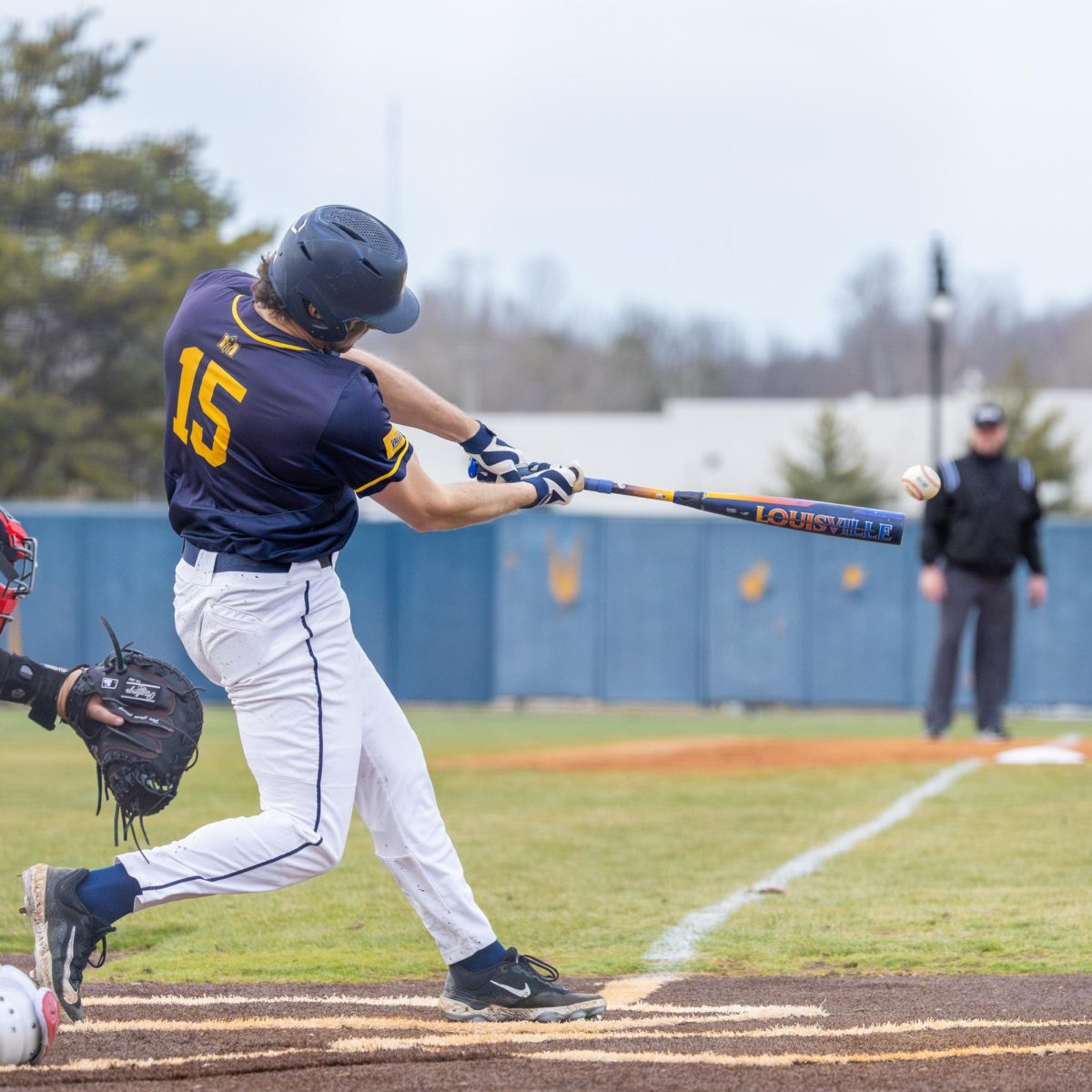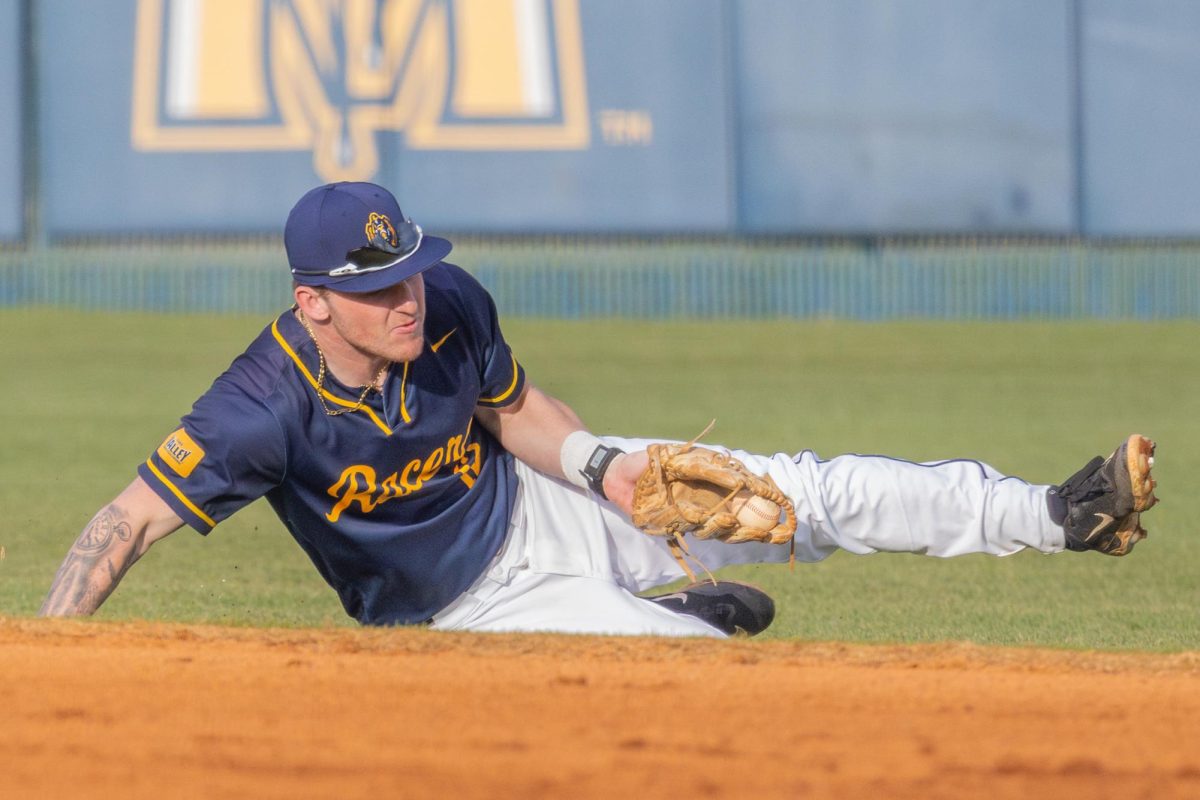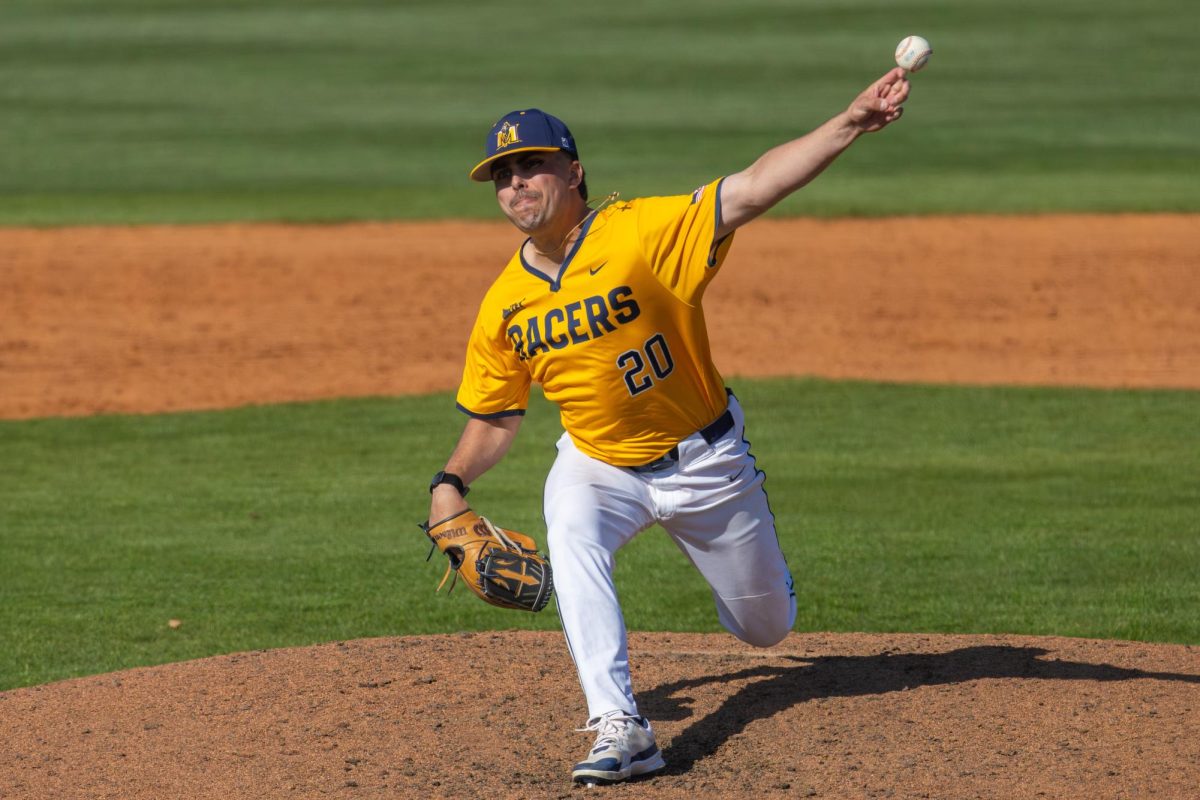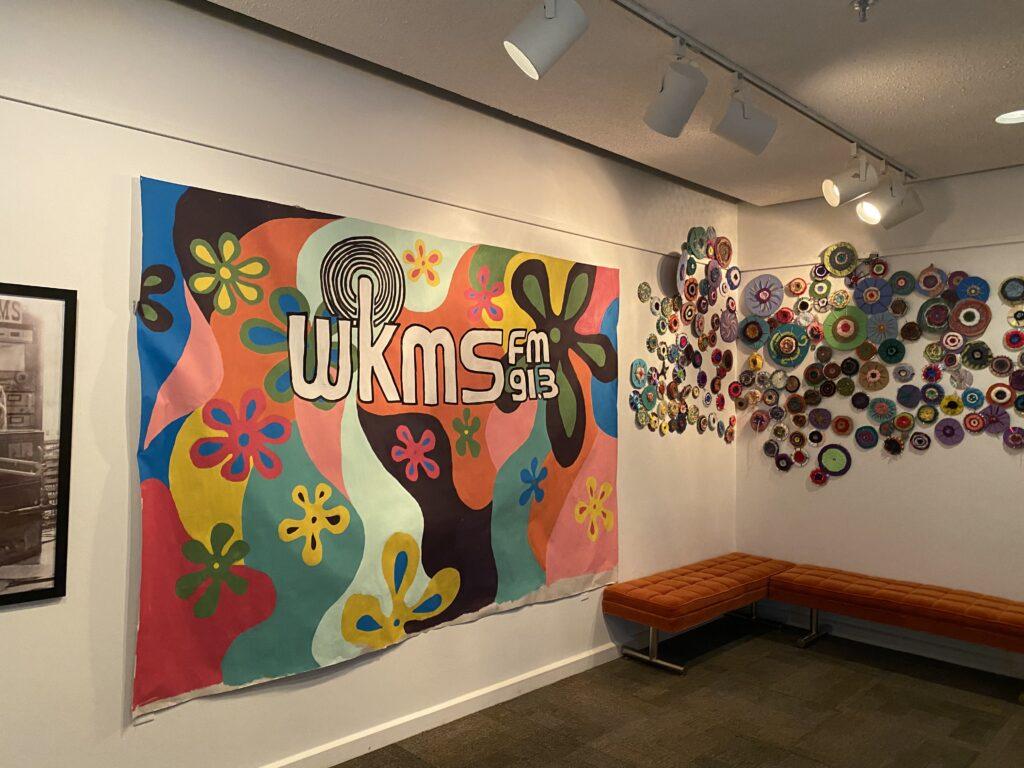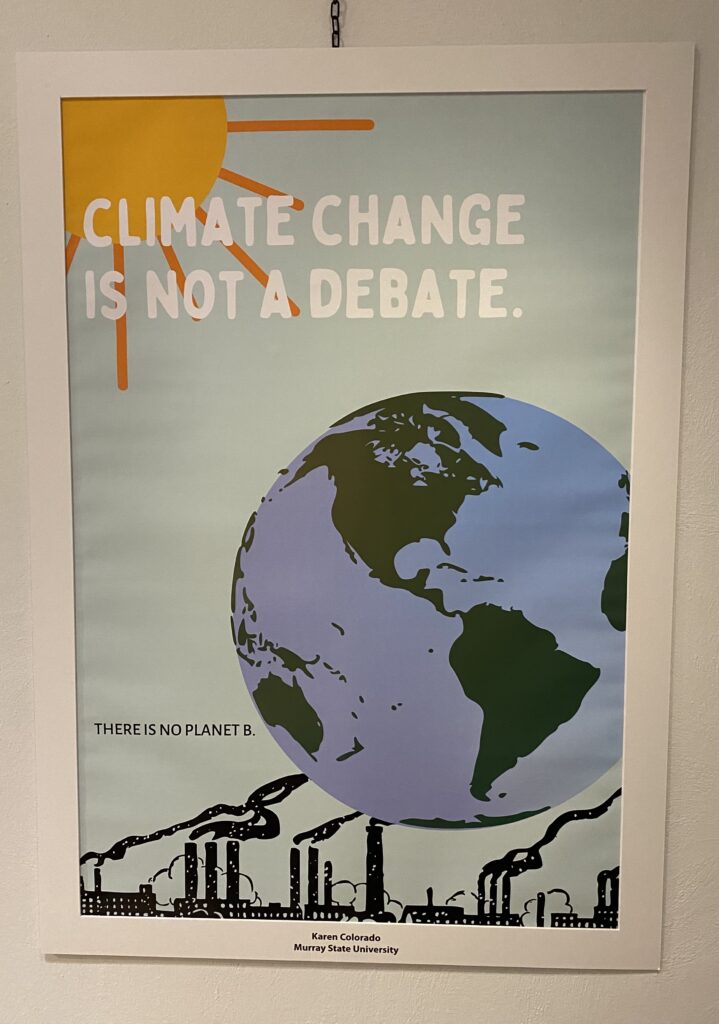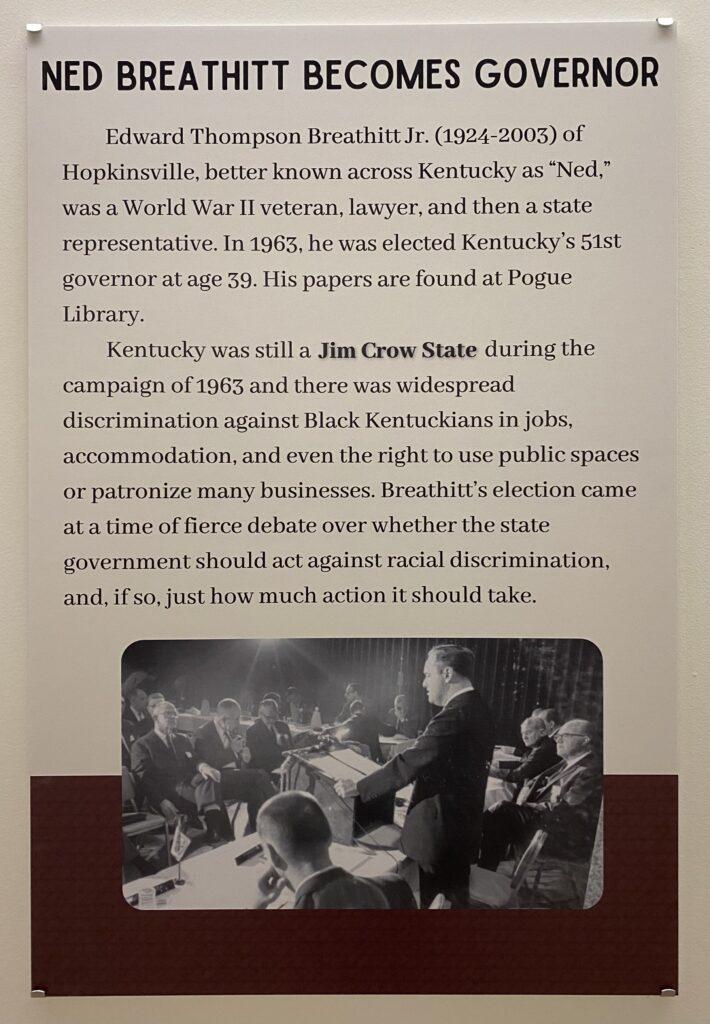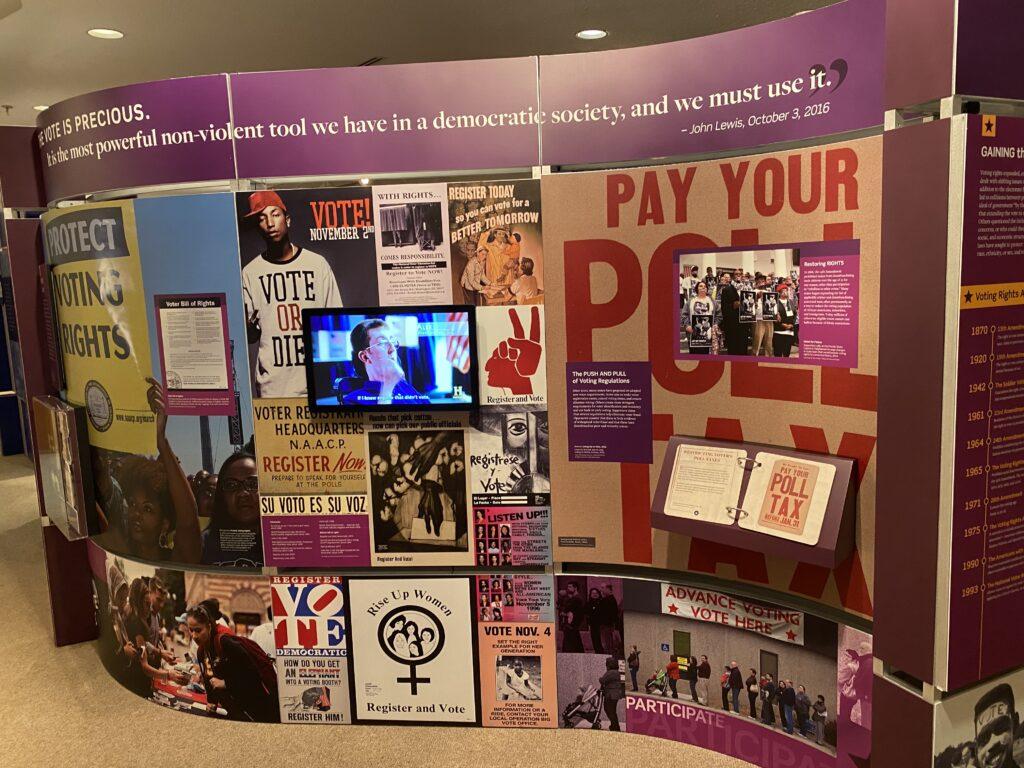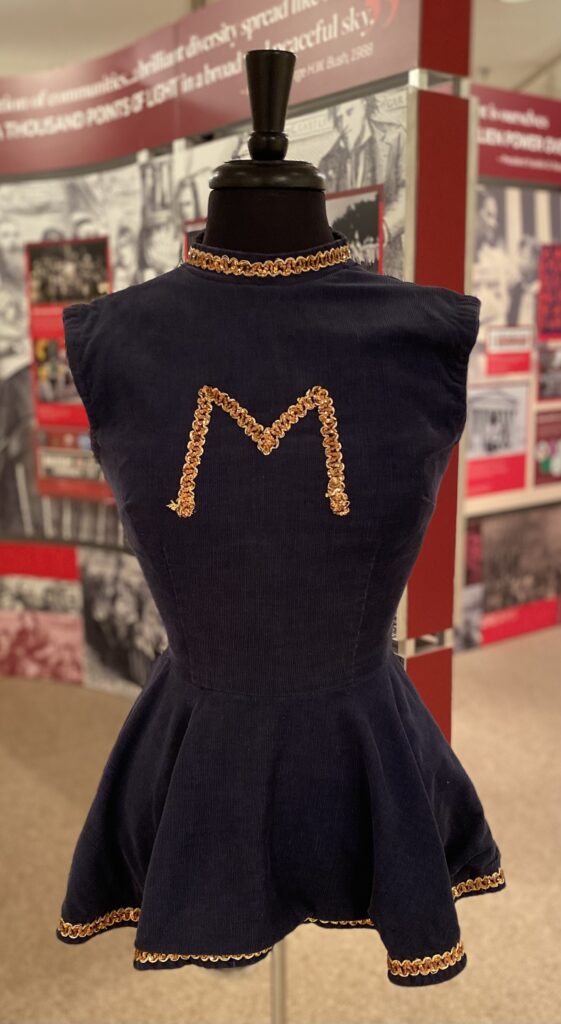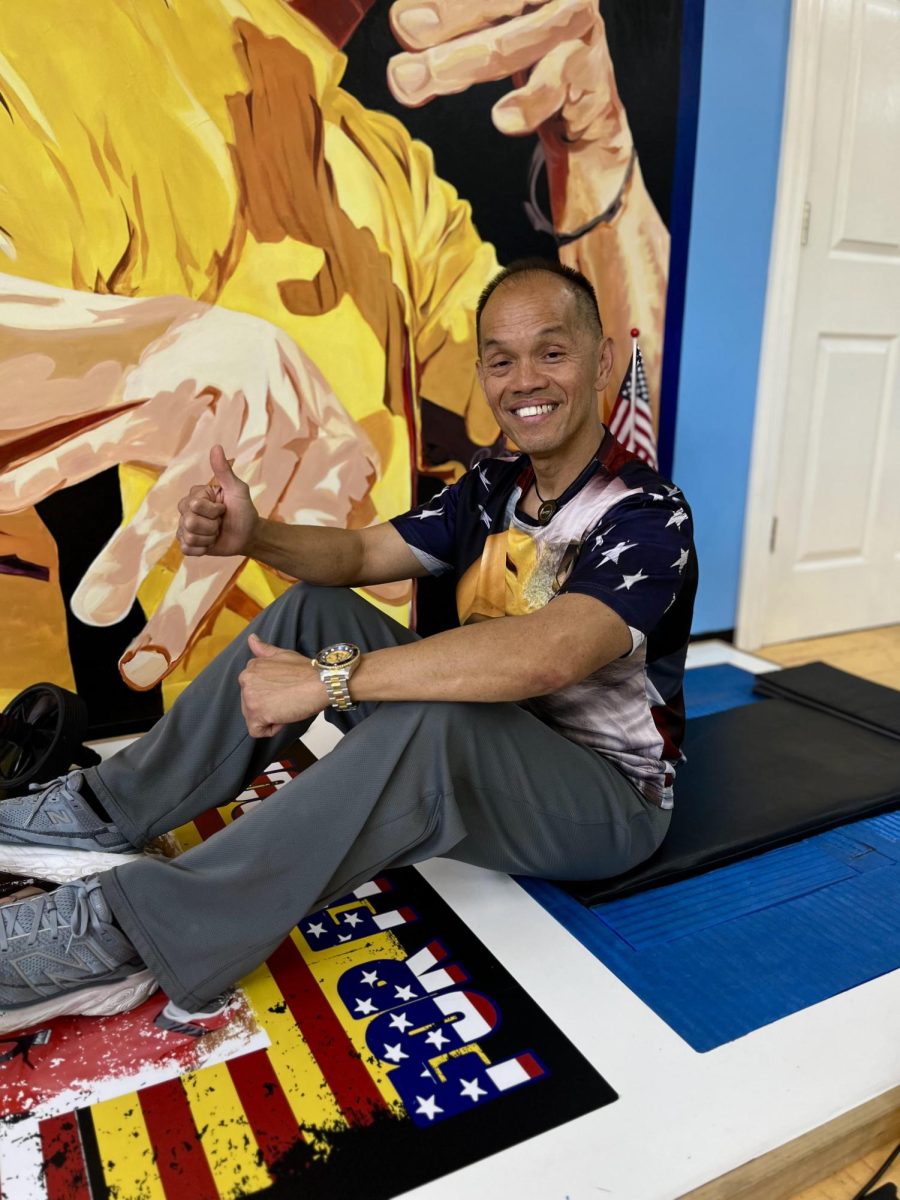Dionte Berry
Features Editor
dberry11@murraystate.edu
The Wrather Museum is opening back up after its COVID-19 closure with the traveling Smithsonian exhibit: “Voices and Votes: Democracy in America.” Along with the Smithsonian exhibit, Wrather Museum also hosts a WKMS exhibit, which shares the history of the radio station, and the Murray Room, which displays pieces of Murray’s past and details Murray State’s history.
With the rest of the University, Wrather closed down in March 2020 because of COVID-19 and reopened on March 27, 2021.
Leading the exhibit curation is Archives Museum Director Jeff McLaughlin. During the closure, he and his team have been planning for exhibits and long term installations.
“In a way, the closure has been good for us, because it has allowed us to plan behind closed doors without having the public coming in,” McLaughlin said.
50 Years of WKMS
Starting the exhibit tour is the WKMS room. Last year, McLaughlin’s students set up the exhibit about WKMS for their 50th anniversary.
The WKMS room was originally supposed to take up a couple of rooms, but space was needed for the Smithsonian exhibit. However, McLaughlin did not want to take the WKMS exhibit down, so they made space for it.
“The exhibit was supposed to open the week we shut down,” McLaughlin said. “We did this work and nobody ever saw it and it would have broken my heart if we took it down and nobody was able to see it.”
The WKMS room features historic photos of bands that have played at WKMS, old posters, vinyls and information about the people who have played a pivotal role in making WKMS what it is today.
With some of the exhibits not being able to fit in the space provided, the rest of the pieces and research that students curated can be found on the Wrather Museum website at https://libguides.murraystate.edu/ under the digital exhibits tab.
“The display exists, but not how we intended it to, but now it lives forever on the internet,” McLaughlin said.
Poster Gallery
Students at the middle and high schools around Murray State were asked to create a digital design for a poster about a social, political or environmental issue that matters to them. The Gallery is a local element that serves to compliment topics such as voting and democracy that is being discussed in the Smithsonian exhibit.
In the center of the Poster Gallery there are tabletop games sent from the Smithsonian that can be used to start conversation.
“The idea with these games is to stimulate conversations about American democracy and culture,” McLaughlin said. “Guests are encouraged to figure out the names provided who had the biggest impacts on American culture.”
This section serves as a local complement to the Smithsonian exhibit, and it is targeted toward children. It brings up the conversation of democracy in America and how it is perceived on a local level.
Voices and Votes/Civil Rights Act Hallway
The exhibit continues to the second floor, where guests can see the fight for votes on a local scale.
“We wanted to use this space to tell some stories about people from around Murray who were instrumental in expanding the vote and getting more people voting rights,” McLaughlin said.
There are many figures highlighted in the second floor hallway, such as former Kentucky governor Ned Breathitt, who passed the first civil rights act in a southern state.
Beyond politicians, there are activists from Murray who are highlighted for their impacts. Ora K. Mason and T.R.M. Howard are among a few that were recognized for their work towards the inclusivity of women and people of color in politics.
Voices and Votes: Democracy in America
Once guests get a taste of Murray State’s past, they can go on to see the traveling Smithsonian exhibit, “Voices and Votes: Democracy in America.”
“At the Smithsonian, they take an exhibit that is on permanent display in one of their facilities in the Capitol and then they make a traveling exhibit,” McLaughlin said. “The exhibit came in around 16 big bins, and it took me and my team around four hours to build it.”
The exhibit includes pivotal figures and events in the fight for the rights of those disenfranchised to get the right to vote.
“The American identity has been wrapped up in the idea of freedom and democracy and it is something Americans take great pride in, but the reality is that democracy and many rights did not translate into action for many years,” McLaughlin said. “This all about the people who fought to be a part of democracy.”
The exhibit gives a timeline of the fight for the vote from the inception of the Declaration of Independence to the Voting Rights Act of 1965 and into the modern day.
Murray Room
From the hallway, guests can go into the Murray State Room and get a glimpse into Murray State’s past.
“The room used to be a bunch of stuff with no story connecting it all explaining why it was all there,” McLaughlin said. “To do some storytelling, we subtracted around three quarters of the physical artifacts here in order to make it more cohesive.”
Wrather is the oldest permanent building on campus, and was not always a museum.
“Murray State began as a one-building college in this location in 1924, so this is where you would have found classrooms, the book store, the chapel, dining room and much more,” McLaughlin said. “This was basically ground zero for Murray State.”
Wrather was put on the National Register of Historic Places on June 18, 1975, and it was opened as a museum on Sept. 22, 1982.
Alongside his team, McLaughlin sees a lot of potential in the museum that Wrather can be.
“I have been putting a lot of energy into the long term transformation of Wrather, and I have staff members that know how a museum would look, and wonderful student workers who have been applying their talents,” McLaughlin said. “By the end of next year, I want to have permanent exhibits that really speak to people and give them a reason to come back.”
With the exhibit being in-person, COVID-19 safety had to be considered.
In order to remain cautious and follow COVID-19 guidelines, groups of guests are staggered in 20 minute intervals.
“We are grateful to be bringing this experience to Murray State,” McLaughlin said. “This exhibit is for everyone and all ages.”
“Voices and Votes: Democracy in America” will be on display until May 1, 2021. Guests can book tours of the exhibit at https://murraystate.libcal.com/appointments/voicesandvotes.













